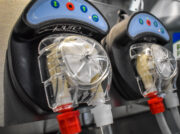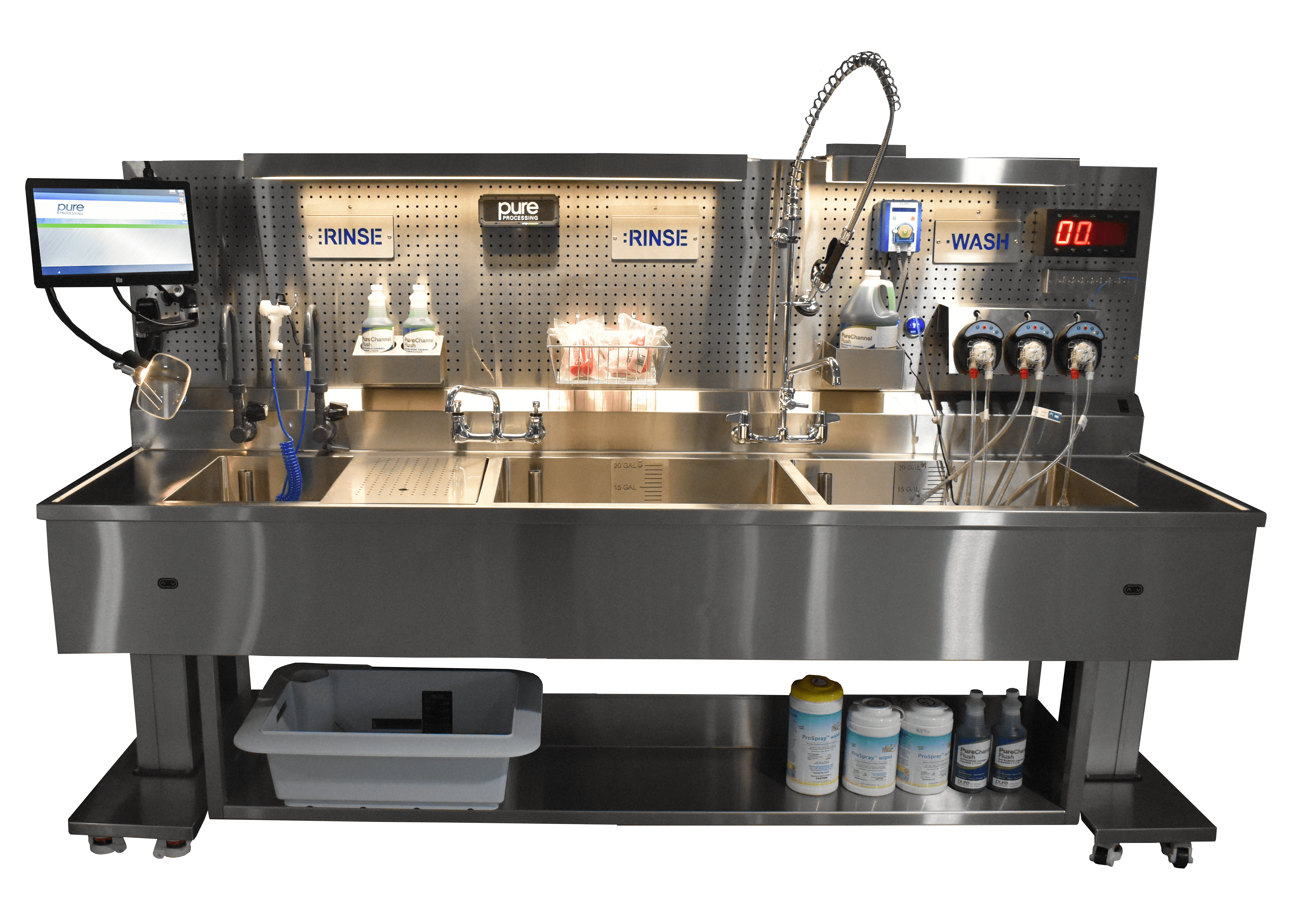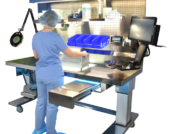
Time: How Instrument Reprocessing Professionals are Fighting the Clock
Instrument reprocessing professionals are spending more time than ever reprocessing instrumentation. As devices have become more complex, an increase in manual and mechanical cleaning time has inevitably followed suit. Tasked with ensuring IFU compliance and meeting the dynamic demands of the operating room and heightening procedures (OR), technicians and nurses are in a perpetual battle with the clock.
 For example, consider the cleaning instructions for Zimmer orthopedic manual surgical devices (for hips, knees, trauma and extremities)1. The instructions list three separate options for cleaning and disinfection, ranging from rigorous manual to completely automated. While rigorous manual cleaning can take up to 45-50 minutes as prescribed by the IFU, sterile processing technicians only save about 10 minutes using a completely automated method using an automated washer and disinfector cycle.
For example, consider the cleaning instructions for Zimmer orthopedic manual surgical devices (for hips, knees, trauma and extremities)1. The instructions list three separate options for cleaning and disinfection, ranging from rigorous manual to completely automated. While rigorous manual cleaning can take up to 45-50 minutes as prescribed by the IFU, sterile processing technicians only save about 10 minutes using a completely automated method using an automated washer and disinfector cycle.
Average times only increase when considering visual inspection, assembly, sterilization, and cooling time. Adhering to device cooling best practices can add up to two hours to a tray’s reprocessing time.
|
Zimmer Orthopedic Reusable Device Reprocessing Instructions* |
||
| Function | Time | Comments |
| Decontamination & manual cleaning | 45 minutes, minimally | Assuming a Combination method of both manual cleaning and automated washing using a washer/disinfector cycle |
| Assembly & visual inspection | TBD | Dependent on the condition of the devices, staffing, workflow, experience of staff, and other variables |
| Moist heat/steam Sterilization | 30-45 minutes, minimally | Dependent on the sterilizer cycle, model, and load size |
| Cooling time after sterilization | 2 hours, preferred | AORN Guidelines for Perioperative Practice: Sterilization2 recommend minimally 30 minutes, but preferrable 2 hours |
| TOTAL | 3.5 – 4 hours, minimally | |
*Reference the full Zimmer IFU for details here. This chart is referential only to provide a general sense of minimally prescribed reprocessing time.
Extensive reprocessing times for surgical devices are not limited to specific specialties or manufacturers. Robotic devices are another great example of lengthy IFU, especially in decontamination.
|
Xi EndoWrist and Single-Site Instruments* |
||
| Function | Time | Comments |
| Prime & soak | 30 minutes, minimally | |
| Flushing & spraying (while submerged) | 5 min per arm, minimally | |
| Ultrasonic | 15 min | Dependent on the sterilizer cycle, model, and load size |
| Post-ultrasonic flushing & spraying (while submerged) | 5 min per arm, minimally | |
| Thermal disinfection | 5 min | Optional step |
| Inspection, assembly | TBD | Dependent on the condition of the devices, staffing, workflow, experience of staff, and other variables |
| Sterilization | 30 min, usually | Dependent on the sterilizer cycle, model, and load size |
| Cooling time after sterilization | 2 hours, preferred | AORN Guidelines for Perioperative Practice: Sterilization2 recommend minimally 30 minutes, but preferrable 2 hours |
| TOTAL | 3.5 hours, minimally | |
*Reference the full and most up to date da Vinci IFU here. This chart is referential only to provide a general sense of minimally prescribed reprocessing time.
Staffing and retention, and impact on turnover time
As people leave sterile processing for positions in other industries, departments are trying to do more than ever with fewer people. The exodus of labor is severely straining many SPD’s ability to keep up with the demand of the OR. This issue is being compounded by the growing reprocessing times that more and more IFUs are requiring for complex devices.
While staffing concerns cannot be resolved overnight, departments should study its impact on reprocessing throughput, and begin identifying solutions now. Read more about the recent impacts to staffing retention with our latest blog, here.
Making better time
There are a myriad of tools, strategies, and methods departments can implement to improve reprocessing times, but cutting corners is not one of them. Adjustments to reprocessing activities utilizing a non-standardized practice that could result in lapses in compliance with IFU and regulatory guidelines should never made. Patient outcomes must always be kept top of mind when adjustment processes or workflows.
Strategies that support better use of time include:
- Increase training for technicians and nurses: while this will require time and effort on the part of management, highly trained staff will not only reprocess their devices more effectively, but with greater adherence to department practices, and with more personal confidence
- Increase device inventory, when possible: investments in instrument sets are often returned quickly, and sets can provide long-lasting returns in the form of durability
- Improve reprocessing functions with better equipment: outdated devices and equipment may not only run slower than newer technology but added downtime can further hinder processes
- Enhance workflows: Validate workflow issues with spaghetti maps. Spaghetti maps can provide compelling insights into how time is spent by workers hopping around departments hunting for tools and materials. Consolidating equipment and materials at workstations and sinks allows for quicker execution of tasks.
- Communicate: Changes in a department are often met with skepticism and subsequent reluctance to conform. Conveying and demonstrating the value associated with efforts to better utilize limited time can help get buy-in and make sure the entire team is operating in the most time-efficient way.
Virtually every department will be faced with the growing dilemma of lengthening reprocessing time. Additions to the reprocessing cycle, like borescope inspections, also complicate turnaround time. But all departments have resources and tools to face these challenges. Consider how a deep dive of your department can reveal hidden time bottlenecks and highlight the areas where your limited time can be spent for the greatest ROI.
Do you have (or need) some ideas to improve your department’s turnaround time? Contact a Pure Processing representative to determine how you can shave time off tasks and start winning the battle against the clock.
Works Cited
- Reusable device reprocessing instructions. Reusable Device Reprocessing Instructions | Zimmer Biomet. (n.d.). Retrieved April 22, 2022, from https://www.zimmerbiomet.com/en/support/reusable-device-reprocessing-instructions.html
- Association of Operating Room Nurses. (2018). Guidelines for Perioperative Practice: Sterilization.



